Against All Odds: The Miracle and Reality of Horse Twins
The Night That Changed Everything
At exactly 340 days, my beloved British Warmblood mare Daisy began showing all the classic signs of foaling. We had covered her with our stunning palomino stallion, Don Colour, and had counted down the days to meet the result. We had imported Daisy and Don as weanlings at different times and this foal was a dream long in the making. As an experienced horse owner with many years of foaling experience, I was right there beside her, ready to welcome what we believed would be a single, healthy foal into the world. Our scans had shown just one baby, and everything seemed perfectly normal for what should have been a routine birth.
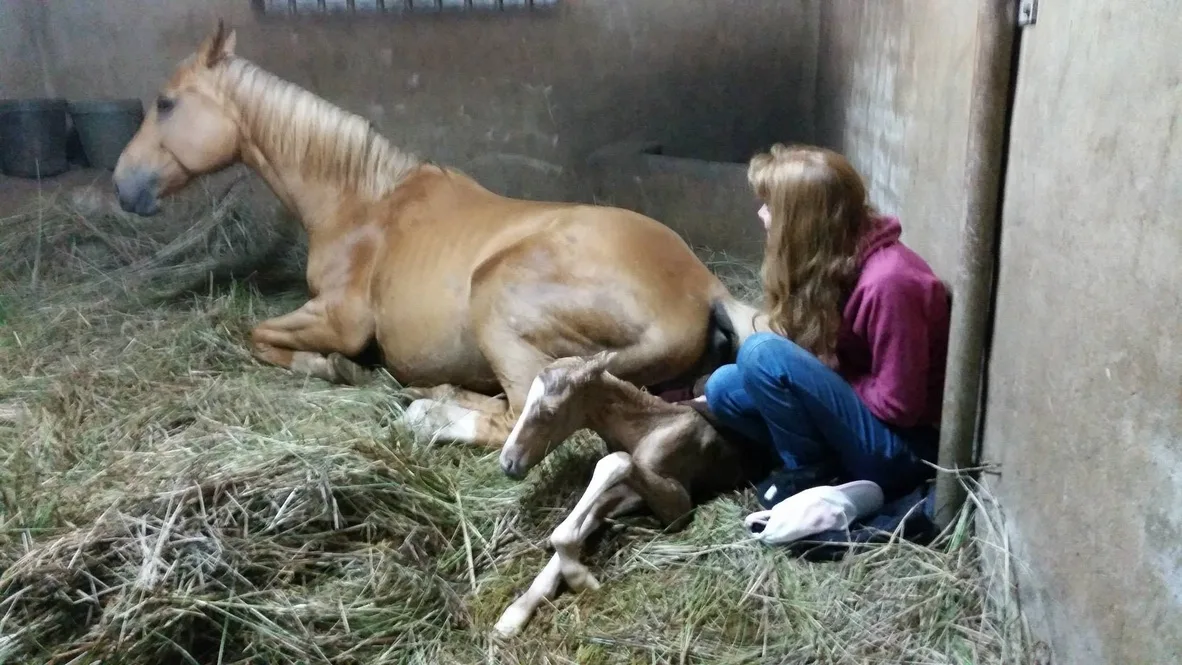
When the first foal arrived, I was thrilled. Don Quixote emerged as a stunning palomino colt with a big blaze and four white socks – everything I could have hoped for in terms of color and markings. He did seem very small considering Daisy was a very big mare. But he was healthy, busy finding his feet and I focused on the joy of the moment.


Daisy got up and turned to greet her newborn, nuzzling him gently as new mothers do. This was her first foal and I could see she was going to be an amazing mom. For those first precious minutes, everything felt completely normal. Then something changed…..
The Shock of Discovery
Daisy began showing signs of restlessness again, which immediately put me on high alert. Then I saw something emerging that I hadn’t expected at all. Luckily, having had many years of foaling experience, I carefully examined what was happening inside her and felt two tiny feet. My heart nearly stopped. There was another foal. I was not expecting that!
What I had seen was the placenta coming out first – a red flag that meant this baby needed to be born immediately. With Daisy still standing and seemingly unaware of what was happening, we pulled out the t second foal. When the tiniest little cremello filly slipped into the world, I could hardly believe my eyes. Against all odds, she was alive, tiny, but breathing.
We named her Duet, and in that moment, I knew we were facing both a miracle and a potential crisis.


The Critical Reality About Horse Twins
Before I continue with our story, I need to share some crucial information: horse twins are typically a veterinary emergency, not a cause for celebration.
The statistics are sobering. In equine pregnancies, twins occur in only about 1-2% of conceptions, and when they do occur, both foals survive in fewer than 10% of cases. The equine uterus simply isn’t designed to support two developing foals, leading to:
- Premature birth and dangerously low birth weights
- Placental insufficiency affecting both foals’ development
- Increased risk of dystocia (difficult birth) endangering both mare and foals
- Higher rates of developmental abnormalities
- Significant strain on the mare throughout pregnancy and birth
Most veterinarians recommend early intervention when twins are detected, often including the difficult decision to reduce the pregnancy to one foal to give that baby the best chance of survival. This isn’t a decision made lightly – it’s based on decades of veterinary experience and the harsh realities of equine reproduction. Over the years we did have a lot of twins pregnancies that we reduced to one twin and most often that foal would be born safely.
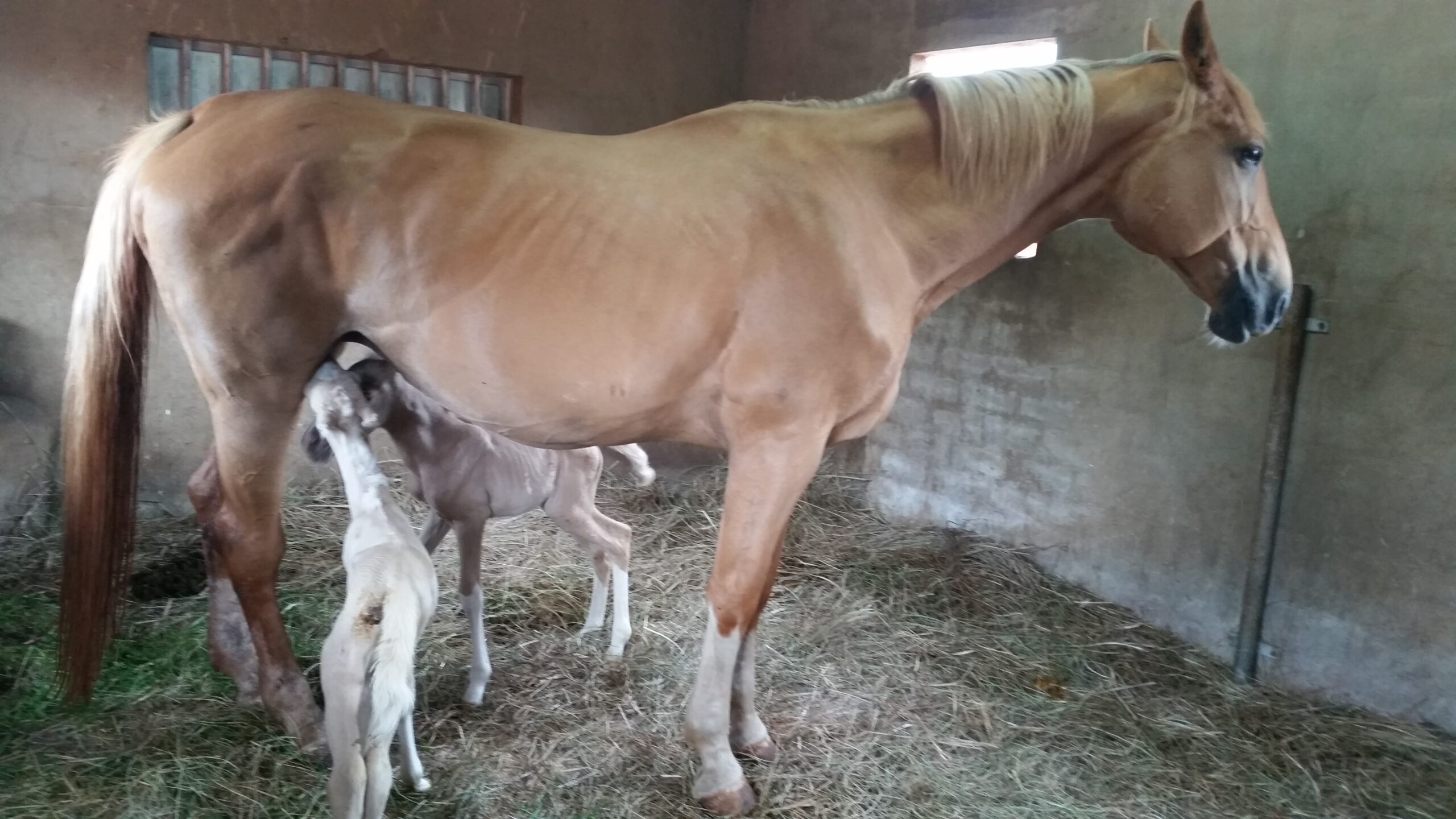
Our Intensive Care Journey
With Don Quixote and Duet both breathing and moving, we immediately shifted into crisis management mode. Duet, being significantly smaller and more fragile, required round-the-clock monitoring. Her size told the story of a pregnancy where two foals had competed for limited resources, with her bearing the greater burden of that competition.


Those first days were a blur of:
- Hourly health checks and temperature monitoring
- Ensuring both foals were nursing adequately (a major concern with twins)
- Supplemental feeding for Duet when needed
- Close veterinary supervision and frequent check-ups
- Sleepless nights watching for any signs of distress
Don Quixote, despite being smaller than expected, was strong and healthy and full of beans, galloping around his stable. Duet, our tiny cremello child, required significantly more intervention, but her fighting spirit was evident from the start.
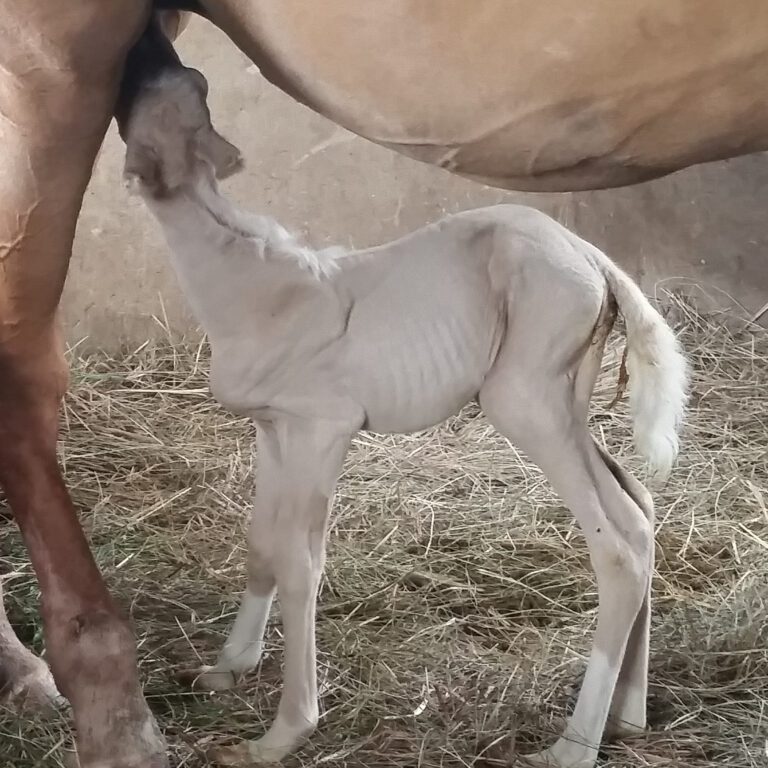
Growing Against the Odds
What followed was a journey that defied every statistic we knew about equine twins. Through careful management, veterinary support, and perhaps a generous helping of luck, both foals began to thrive.
Their first few days together captured hearts around the world when our video went viral, showing these unlikely survivors taking their first wobbly steps and discovering their new world. But beyond the cute factor that drew viewers, we were documenting something genuinely rare in the equine world.
As weeks turned to months, their personalities emerged. Don Quixote proved to be bold and confident, often leading their adventures around the paddock. Duet, though smaller, showed remarkable resilience and intelligence, often finding creative solutions to keep up with her bigger brother.
Their first turnout was magical – watching them discover grass, sunshine, and the freedom to run together. The video footage from those early months shows not just adorable foals, but survivors beating incredible odds every single day.




The Weaning Challenge and Beyond
Weaning went surprisingly smoothly. The twins and Daisy were stabled at night and went out into a big paddock during the day with other mares and foals. When the twins were just over 6 months, we could see that Daisy was ready to leave them. It was always a scary time weaning foals and weaning two foals felt like it would be more challenging. What if both foals galloped around calling for their mother?
We wondered how this was going to go. When we took them out to their paddock as usual, Daisy left them grazing with their friends. We took her out of their paddock and moved her to a paddock with other mares who were her friends out of ear shot distance in case they called to her. Daisy didn’t look back, not even once. Quixote realised suddenly that his mom was not close by and cantered up to the gate calling for her, Duet followed him but not with any panic; she didn’t call at all.
When they realised that Daisy was not around they had a quick canter around the paddock but quickly went back to the other mare and foals that were in the paddock and put their heads down to graze, they were now weaned – it was that easy.





We took photos of the twins on their first birthday shown below. They had grown into beautiful, perfectly healthy young horses. At this age we had to separate them as Quixote was getting too coltish and playing too rough but both babies were very happy in their respective friend groups.


The Responsible Message
I share this story not to encourage twin pregnancies, but to educate about their realities while celebrating our exceptional outcome. Our experience represents the rare exception, not the rule.
Responsible breeding practices should never aim for twins. When twin pregnancies are detected early (usually around 14-16 days), veterinarians typically recommend intervention to ensure the best possible outcome for one foal rather than risk losing both.
The emotional and financial costs of managing a twin pregnancy are enormous. We were fortunate to have:
- Extensive foaling experience
- Immediate veterinary support
- The resources for intensive round-the-clock care
- A mare with the size and strength to carry twins longer than most
- Exceptional luck
Most twin pregnancies don’t have these advantages, and the heartbreak of losing one or both foals is far more common than success stories like ours.
Certain horse breeds are more prone to having twins
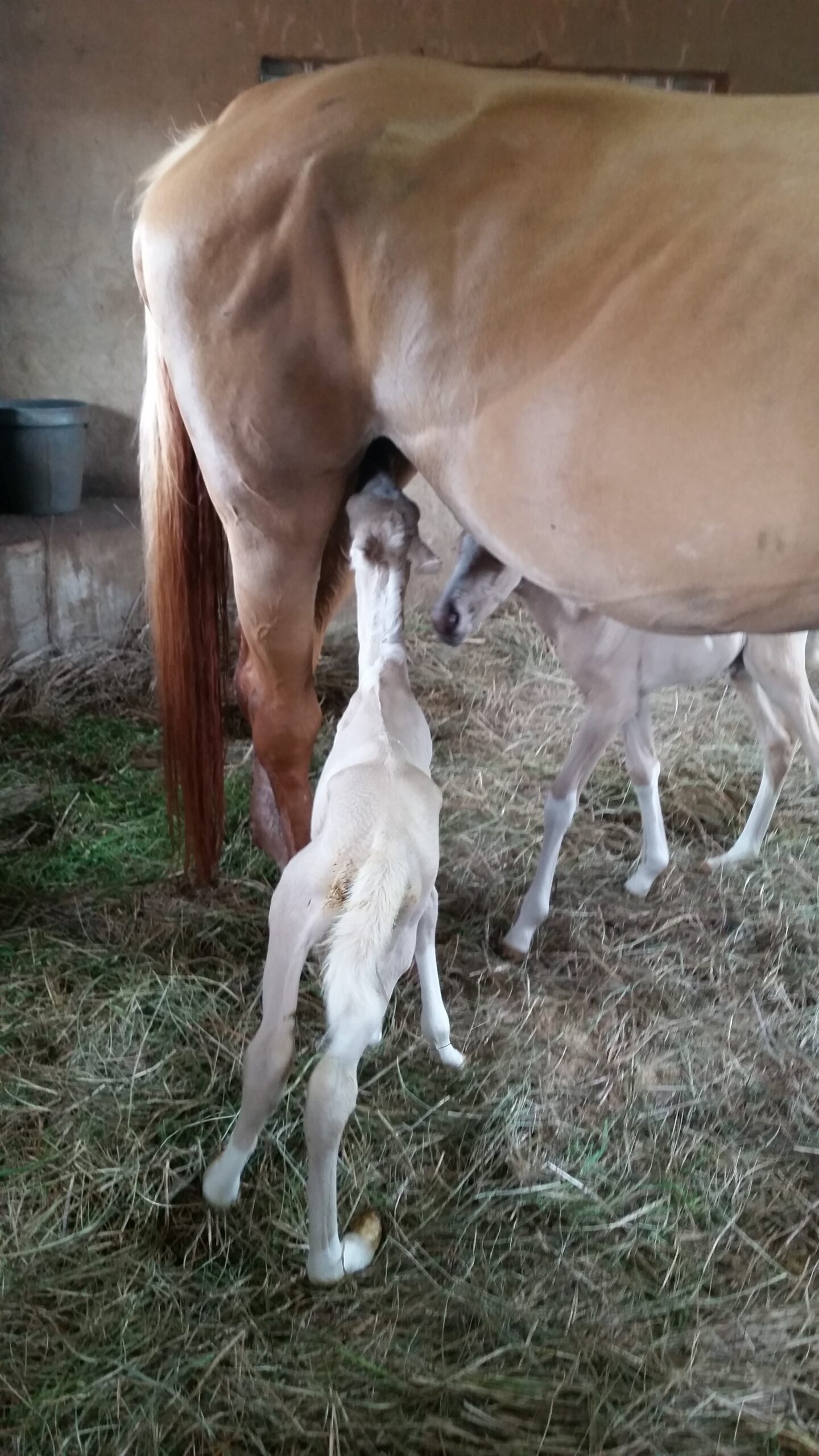
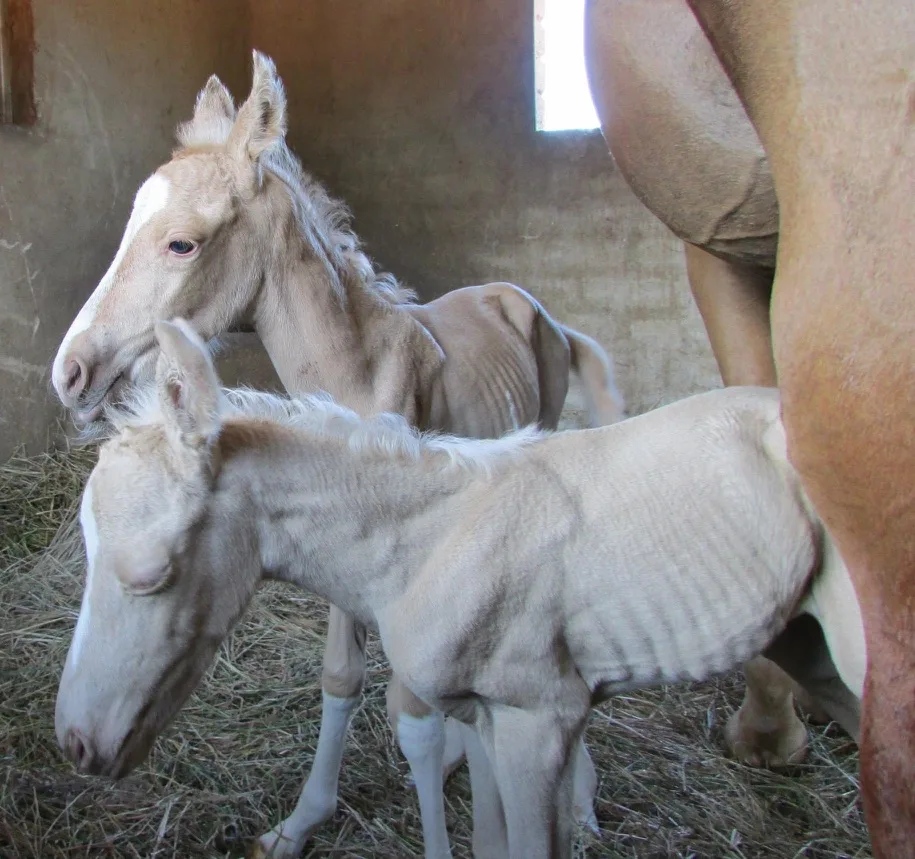
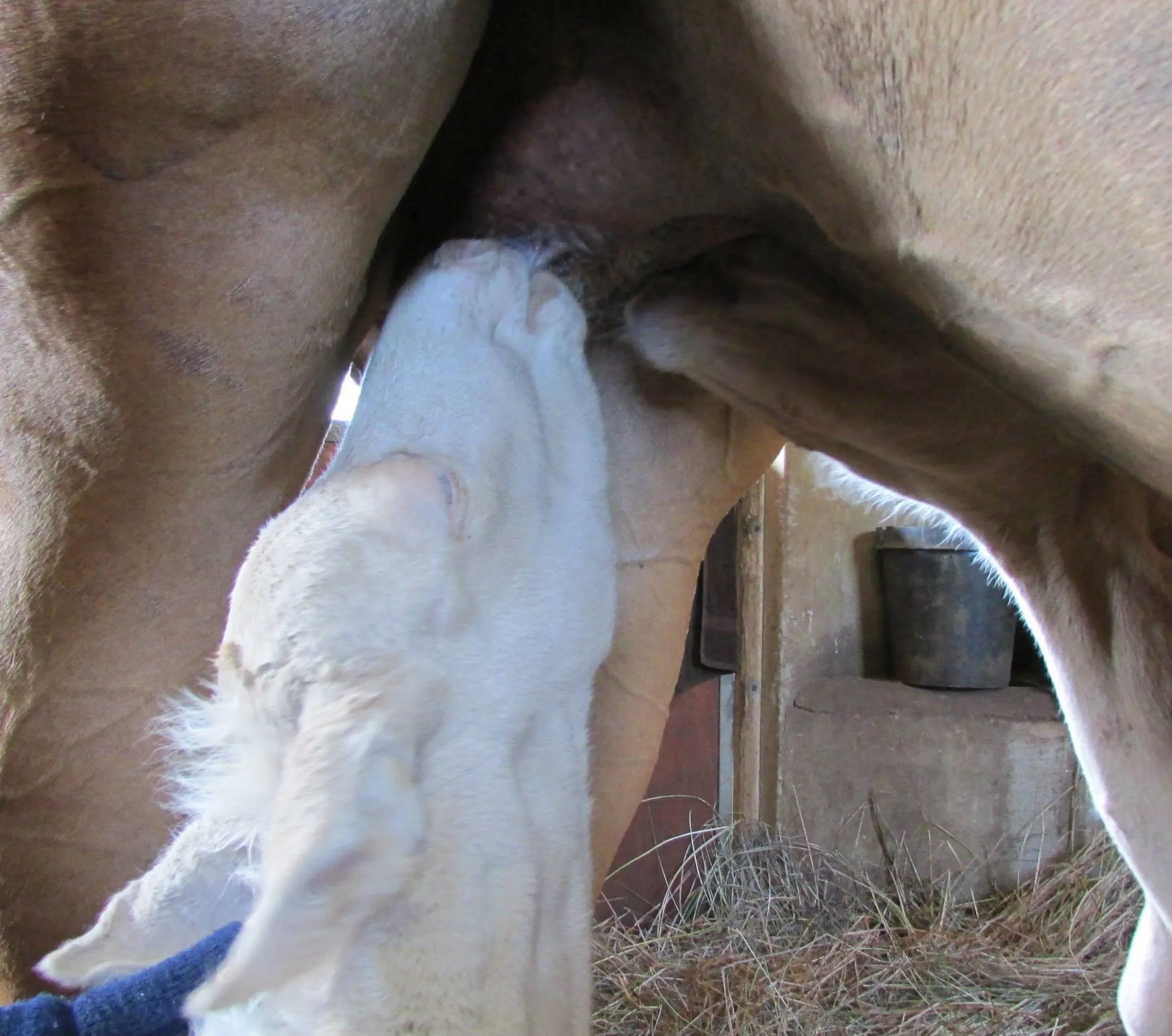
While twin pregnancies are generally rare in horses, there is some evidence to suggest that certain horse breeds may have a slightly higher predisposition to producing twins. However, it’s important to note that the occurrence of twins is still infrequent across all breeds. Here are a few factors to consider:
- Pony and Miniature Horse Breeds:
- Some smaller horse breeds, such as ponies and miniature horses, may have a slightly higher incidence of twin pregnancies compared to larger breeds. The smaller size of the reproductive organs in these breeds might make it more challenging for the mare to expel both embryos during the early stages of pregnancy.
- Draft Horse Breeds:
- Draft horse breeds, known for their larger size, may have a lower likelihood of twin pregnancies. The larger uterus in these breeds might be less conducive to the development of multiple embryos.
- Thoroughbreds:
- Thoroughbred mares, commonly used in racing, have been reported to have a higher incidence of twin pregnancies. However, most Thoroughbred breeders actively monitor and manage pregnancies to reduce the risk of twins due to the associated complications.
- Breeding Practices:
- Breeding practices can also influence the likelihood of twin pregnancies. Breeds that are subjected to artificial reproductive technologies, such as embryo transfer or assisted reproductive techniques, may have a higher chance of twins due to the manipulation of reproductive processes.
- Individual Variability:
- Despite breed tendencies, the occurrence of twins can vary widely among individual horses. Genetics, age, and overall health of the mare play significant roles in the likelihood of twin pregnancies.
Twin pregnancies in horses are considered undesirable due to the increased risks and challenges associated with carrying and delivering twins. Many breeders actively work to identify and manage twin pregnancies early on, often through regular ultrasound examinations, to reduce the likelihood of complications for both the mare and the foals.
Horse owners and breeders must work closely with veterinarians, especially during the early stages of pregnancy, to monitor for and address any potential issues related to twins. Early detection allows for appropriate management strategies to be implemented, improving the chances of a successful and healthy outcome.
A Grateful Conclusion
Don Quixote and Duet continued to thrive and grew up into beautiful horses. Their story serves as a reminder of both the miracles possible in the equine world and the importance of responsible breeding practices.
If you’re involved in horse breeding, work closely with your veterinarian for early and regular pregnancy monitoring. If twins are detected, trust the professional guidance you receive, even when the decisions are difficult.
Our twins survived against all odds, but they remain a beautiful exception to a rule written in the harsh realities of equine reproduction. Every day with them is a gift we never take for granted.
Follow Don Quixote and Duet’s continued journey as they grow into their roles as living reminders of both the miracles and responsibilities that come with bringing new life into the world.



Further reading
Veterinary and Educational Resources
American Association of Equine Practitioners (AAEP)
- Their breeding and reproduction guidelines
- Search their resource library for “twin pregnancy management.”
- aaep.org
The Horse Magazine
- Extensive articles on equine reproduction and twin pregnancies
- Search archives for “equine twins” and “mare management”
- thehorse.com
Veterinary Partner (VIN)
- Client education materials on equine reproduction
- Easy-to-understand explanations of twin pregnancy risks
- veterinarypartner.com
Academic and Research Sources
Journal of Equine Veterinary Science
- Peer-reviewed research on twin pregnancy outcomes
- Studies on early embryonic reduction techniques
University Extension Programs
- University of Kentucky Gluck Equine Research Center
- Colorado State University Equine Reproduction Laboratory
- Texas A&M AgriLife Extension (equine reproduction resources)
Horses Giving Birth To Twins – Risks: Scone Equine Hospital
Twin foals suffer a higher rate of stillbirth, and those born alive are usually smaller, weaker, and more susceptible to infection with slower development …
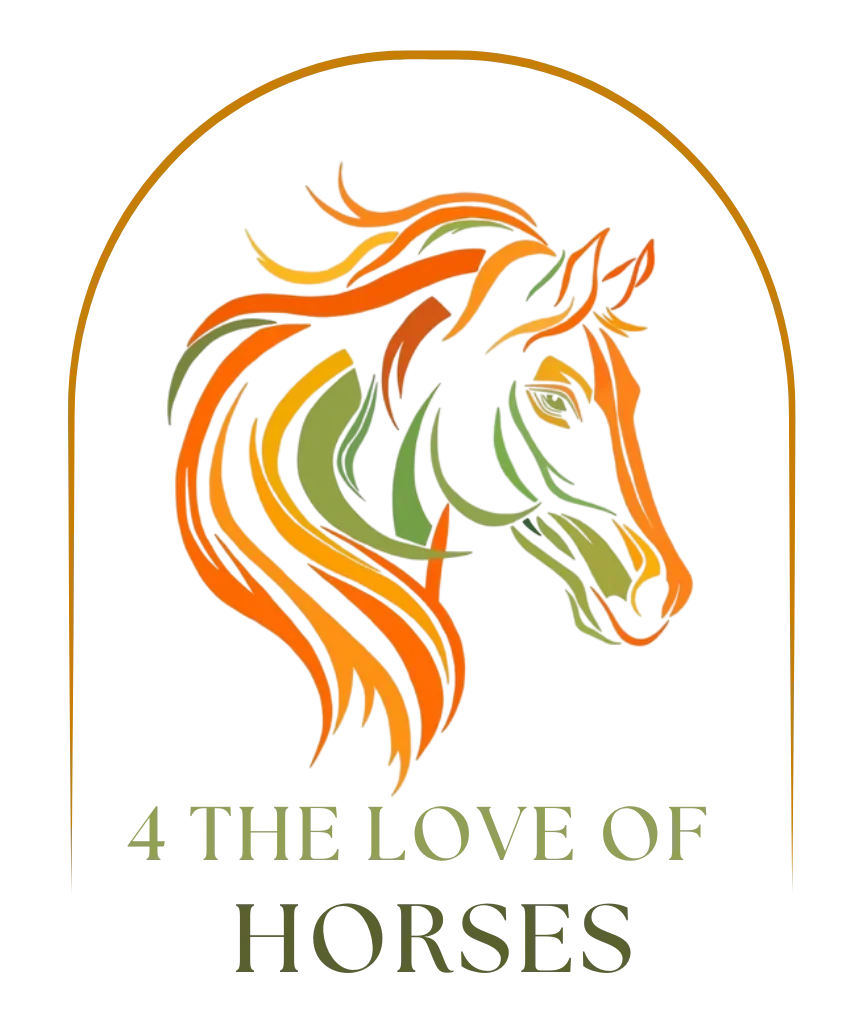
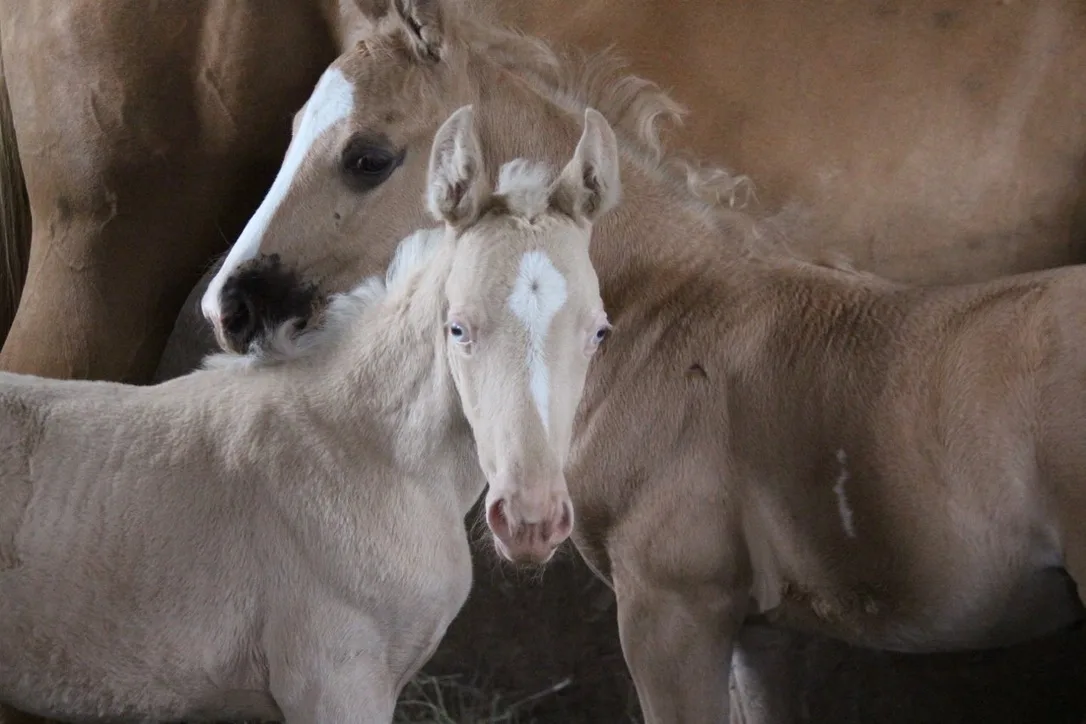

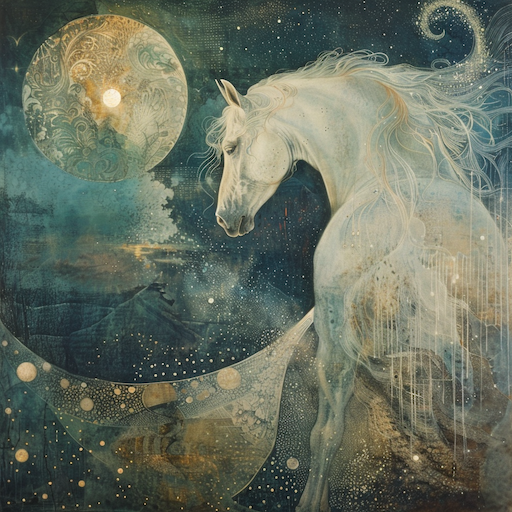
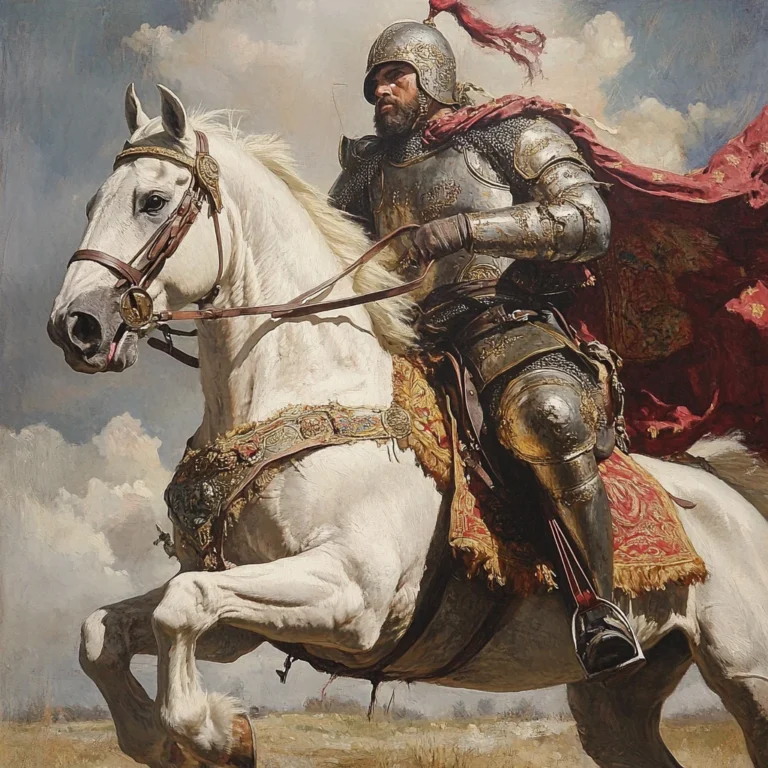

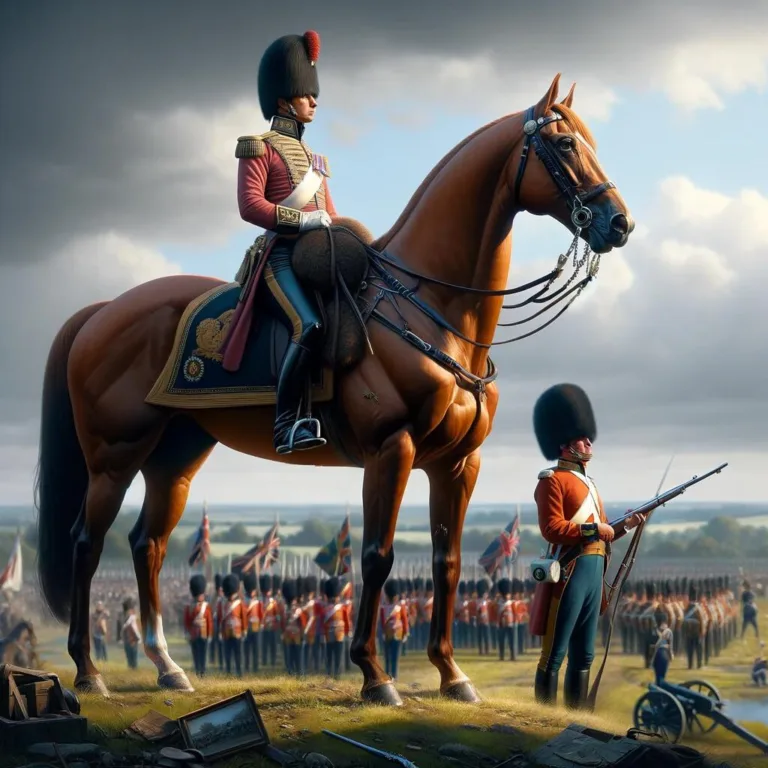

Leave a Reply